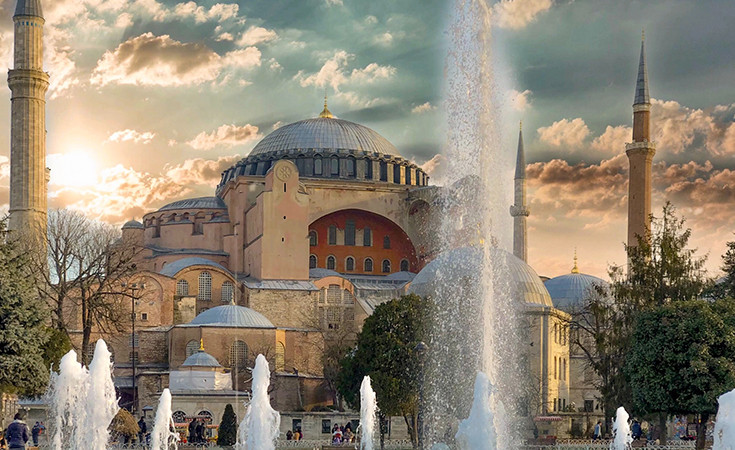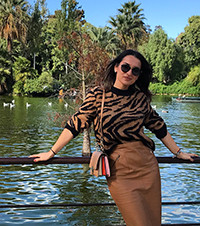
The incredible Hagia Sophia, a symbol of Istanbul and a masterpiece of history and art, is an unmissable shrine and museum to visit. Saint Sophia, or as it is also called the Wisdom of God, was built in 537 years. It was built as an Orthodox church, built by Emperor Justinian between 532-537. year, in the old core of what was then Constantinople.
Written data confirm that around 10,000 people worked in the construction. When it was built, Emperor Justinian, according to legend, exclaimed: "Solomon, I have surpassed you". He was alluding to the famous ruler who built the First Temple in Jerusalem. At the time Hagia Sophia was built, there were large churches in the Western Roman Empire, but Hagia Sophia was the first of its kind in the Eastern Roman Empire and the largest of all Christian churches in the world.
It was turned into a mosque in 1453, when the Ottomans led by Sultan Mehmet II captured Constantinople. The Ottomans tried to preserve the originality and details of the monuments, not to demolish them. In the same way, the Hagia Sophia retains its original name, and its gold and blue mosaics are not destroyed, but are broken by order of the sultan. This is the main reason why the mosaics were preserved and can still be seen on the walls of this incredible complex.
By the decision of the "father" of modern Turkey, the great reformer Mustafa Kemal Ataturk in 1935, Hagia Sophia became a museum. Under great pressure from Erdogan and his supporters, it was restored to the status of a mosque. The State Council returned the Hagia Sophia to a mosque and as such today is a popular place among tourists. It was officially opened as a new mosque on July 24, 2020.
Hagia Sophia was also a Roman Catholic church in the 1200s. It was considered the largest Christian church until 1520, when the Seville Cathedral was built.
The architects who worked on the Hagia Sophia project are Isidor Miletski and Anemije Tralski. Hagia Sophia was built on the site of two small churches that burned down in a fire. The word aya in the name Hagia Sophia comes from the word "saint" while sophia is from the word sophos, which means "wisdom" in ancient Greek. And the name "Aya Sofia" means "holy wisdom" or "divine wisdom". Today's Hagia Sophia is also known as the "Third Hagia Sophia", because it is actually the third building built on the same site. The first two churches were destroyed. The central dome of Hagia Sophia, the largest dome of its era, collapsed many times during the reign of the Eastern Roman Empire, but survived later when the famous Ottoman architect Mimar Sinan added retaining walls to the building.
Hagia Sophia was the largest church of the Eastern Roman Empire and the Ottoman Empire with a huge dome with a diameter of 31.61 m and a height of 55 meters. The world's largest dome is supported by six smaller domes around it. The total area of the museum is 7570 meters. The length is more than 100 meters. It had 7 doors, and the biggest one was used only by the emperor.
In 2015, Hagia Sophia was considered the most visited landmark in Turkey.
The magnificent interior space of Hagia Sophia tells history. Before entering Hagia Sophia, it is necessary to take off your shoes and leave them in the lockers located in the hall. Women must wear a headscarf and be properly clothed. The feeling of a special sanctuary is the part where people pray, in that part you can feel a special silence and peace even though there are a large number of tourists in Hagia Sophia throughout the day.
The chandeliers in Hagia Sophia give the space a special character and also make it different from other cultural monuments.
• Hagia Sophia is a monument of world cultural heritage and is on the UNESCO list
• Over 10,000 workers were in charge of building the Hagia Sophia church for 5 years
• Aya in translation means saint, Sophia when translated from ancient Greek means "Wisdom"
• The name Third Sophia is often heard because it is the third church built on the same site
• Entrance is free
• It is located in the center of the old town.
Author of the article:

Maja Glavaš, works in tourism
Contact [email protected]; instagram: travel_europe1
Photo by Zen zeee on Unsplash